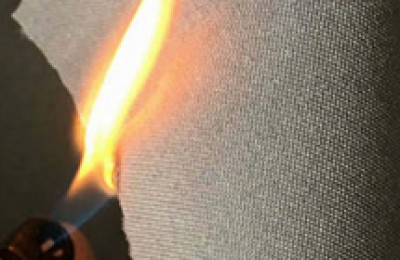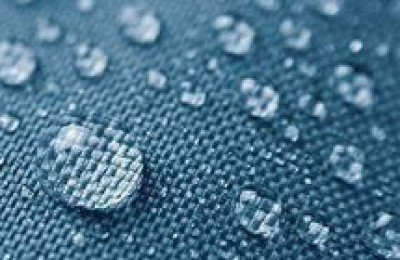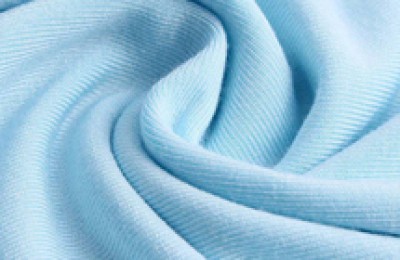Xinjiang cotton is a high-quality natural fiber raw material recognized by the global industry. It better meets the rigid consumer demand for cotton textiles and clothing worldwide and is an important raw material guarantee for the healthy and sustainable development of China’s textile industry. In response to the actions of some international brands and international institutions to exclude Xinjiang cotton and its products from their commercial activities based on lies and false information, the entire textile industry chain has spoken out and used practical actions and strength data to support Xinjiang cotton.
CCTV: Nigmaiti, Yu Mengyu and others broadcast live broadcast of Xinjiang cotton products
Recently, A live broadcast of Xinjiang cotton products organized by the News and New Media Center of the China Central Radio and Television Station, and hosted by CCTV host Nigmaiti and Yu Mengyu and other guests, allowed us to see the light of domestic products and hear the support of netizens for Xinjiang The sound of cotton felt the power of Chinese people hugging each other tightly like pomegranate seeds. The live broadcast lasted less than two hours, and orders placed on the Kuaishou live broadcast platform alone exceeded 10 million yuan.
In the live broadcast, not only celebrities appeared, but also many ordinary people: Xiaomi, a Kuaishou anchor who came out of the countryside, said that she wanted to use ordinary people’s Strength, speaking for Xinjiang cotton; there is Zhang Hongyuan, the “Xinjiang Cotton Brother” who plays drums and sings in the cotton fields. He said that cotton is harvested by mechanization now, so he has free time to enjoy life and realize his dreams, so there is no so-called “Xinjiang Cotton Brother” in Xinjiang. “Forced labor” situations.
Huafu Fashion: Joining hands with top ten brands to enter Xinjiang Huafu
At 8:00 pm on March 28, Lieer Baby Live Studio joins hands with top ten brands such as Anta, Peak, Semir, Sanqiang, Maoren, Heilan House, Anair, Balabala, Luolai, and Jialiya to enter Xinjiang Huafu and open a special session for Xinjiang cotton and Xinjiang specialties. Xinjiang cotton.
In the live broadcast room, Chen Liang, deputy general manager of Huafu Domestic Marketing, introduced: Huafu has 180,000 acres of high-quality cotton fields in Xinjiang, focusing on the quality of cotton starting from the source; 35 gins, annual cotton The operating capacity is 600,000 tons; fully meeting the demand for high-quality Xinjiang gray cotton.
Then, the anchor walked into Huafu’s production workshop and introduced Huafu’s advanced production workshop and color spinning production process. Huafu adopts the most advanced complete sets of spinning equipment and connects to SAPERP through the e-system to achieve lean management with real-time monitoring. After fifteen years of accumulation, it has built a supply chain system from cotton planting, processing, trading to dyeing and spinning, forming one of the “three yarns in one” spinning base with an annual output of 160,000 tons of yarn.
Lieerbaby (the brand owner) and Huafu Fashion Co., Ltd. jointly announced that the two parties have reached an in-depth strategic partnership and will jointly promote the use of Xinjiang cotton and Xinjiang yarn in product manufacturing to contribute to the sustainable development of Xinjiang. Prosper and develop, practice corporate responsibility.
Huafu Fashion is the first large-scale cotton spinning enterprise in China to respond to national policies and enter Xinjiang, insist on growing Xinjiang cotton, use and promote Xinjiang cotton, and is the brand’s first Close partners, the two parties have now reached an agreement to purchase the first batch of Xinjiang cotton yarn. The brand’s industrial chain will use 500 tons of Huafu’s high-quality yarn. In the future, the two parties will continue to increase cooperation in the industrial chain, using high-quality Xinjiang cotton as a carrier, and jointly provide Consumers produce superior cotton products with better quality and greater comfort.
In the live broadcast session, the anchor promoted Huafu colored yarn and Huafu hang tags to end consumers. Let consumers understand the benefits of color spinning to themselves and the environment, as well as the advantages of Huafu color spinning yarn, how it is applied to fabrics and clothing, what products and experiences it can bring to consumers, etc.
The live broadcast lasted for a full 4 hours from 8 pm to 12 pm. According to statistics, a total of 5.7 million viewers watched the live broadcast. The number of viewers during the live broadcast continued to rise, and sales reached 11 million yuan. Since the domestic brands supplied by this live broadcast are public welfare, the discounts are very large. If the normal price is used, the sales may reach 30 million. As for the “Plant a cotton plant in spring, harvest a piece of clothing in autumn” campaign, the original plan was to make 2,500 pieces of clothing per piece, but due to the overwhelming response, the number was increased to 15,000 pieces at the request of netizens.
Sinomachine Group: Mechanized cotton picking, intelligent spinning
Blowing white cotton is picked on the branches , transformed into various textile materials and used in all aspects of life. Among them, the help of the national “machine” is indispensable. During the cotton picking season in the golden autumn, you can see the busy work of “China Agricultural Machinery” cotton picking machines in every cotton growing area in Korla, Aksu, Kashgar, Wusu, Shawan… in Xinjiang. The application of these “China Agricultural Machinery” cotton picking machines has greatly reduced the labor intensity of cotton farmers, and the increasing net picking rate has greatly increased cotton output and cotton farmers’ income.
As early as 2002, the China Agricultural Mechanization Research Institute of SINOMACH (hereinafter referred to as the “China Agricultural Machinery Research Institute”) developed the 4MZ-5 horizontal spindle self-propelled cotton picker. This equipment The development of this product kicked off the promotion of machine-picked cotton in my country.
In 2010, the China Agricultural Machinery Research Institute specially provided a��Mainly spinning pure cotton, the products are mostly sold to downstream enterprises in the textile industry in Jiangsu, Zhejiang and other places. “Xinjiang cotton is the cotton that we have used for a long time with small differences in color difference, impurities, length, consistency, spinnability, etc. within the same batch of cotton. We will definitely continue to use Xinjiang cotton in the future.” Liu Jianjun told reporters , they believe that Xinjiang cotton is good!
Fujian Hongyuan: Use intelligent equipment to make good use of Xinjiang cotton
Recently, reporters visited the warehouse of Fujian Hongyuan Group Co., Ltd. There are nearly 700 tons of Xinjiang cotton, which comes from the Aksu region of Xinjiang. Xinjiang cotton, as the “big star” of this large cotton textile manufacturer, uses more than 10,000 tons every year. For 20 years, Fujian Hongyuan Group has been purchasing and using Xinjiang cotton.
Chen Cangsong, director, vice president and party secretary of Fujian Hongyuan Group Co., Ltd., said that both domestic textile enterprises and the domestic consumer market, as well as the international textile industry chain, supply chain and consumer market, are actually inseparable. Xinjiang cotton. The global cotton producing areas mainly include India, China, the United States and Central Asia. As the world’s second largest cotton-producing country, my country’s Xinjiang cotton output is 5.2 million tons, accounting for approximately 87% of national cotton production and approximately 67% of domestic cotton consumption. The best-quality southern Xinjiang long-staple cotton is famous far and wide. With the improvement and upgrading of planting technology, environmentally friendly and healthy Xinjiang colored cotton such as yellow and gray are becoming more and more popular, showing great market vitality.
Regarding the boycott of Xinjiang cotton, Chen Cangsong said that the target behind this incident is actually the Chinese textile and apparel supply chain. This incident will have a certain impact on the industry structure and industrial chain. But regardless of the impact, local companies will continue to be the guardians of Xinjiang’s long-staple cotton, and we are also accelerating some industrial upgrades, using intelligent machinery and equipment to improve production efficiency and product quality. Do a good job in China’s textile and apparel manufacturing industry. </p






